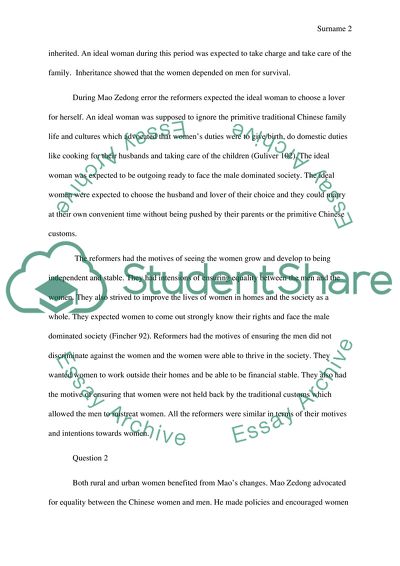Cite this document
(Modern Women in China and Japan: Gender, Feminism and Global Modernity Between the Wars Assignment Example | Topics and Well Written Essays - 1750 words, n.d.)
Modern Women in China and Japan: Gender, Feminism and Global Modernity Between the Wars Assignment Example | Topics and Well Written Essays - 1750 words. https://studentshare.org/history/1826249-chinese-women-xz
Modern Women in China and Japan: Gender, Feminism and Global Modernity Between the Wars Assignment Example | Topics and Well Written Essays - 1750 words. https://studentshare.org/history/1826249-chinese-women-xz
(Modern Women in China and Japan: Gender, Feminism and Global Modernity Between the Wars Assignment Example | Topics and Well Written Essays - 1750 Words)
Modern Women in China and Japan: Gender, Feminism and Global Modernity Between the Wars Assignment Example | Topics and Well Written Essays - 1750 Words. https://studentshare.org/history/1826249-chinese-women-xz.
Modern Women in China and Japan: Gender, Feminism and Global Modernity Between the Wars Assignment Example | Topics and Well Written Essays - 1750 Words. https://studentshare.org/history/1826249-chinese-women-xz.
“Modern Women in China and Japan: Gender, Feminism and Global Modernity Between the Wars Assignment Example | Topics and Well Written Essays - 1750 Words”. https://studentshare.org/history/1826249-chinese-women-xz.


